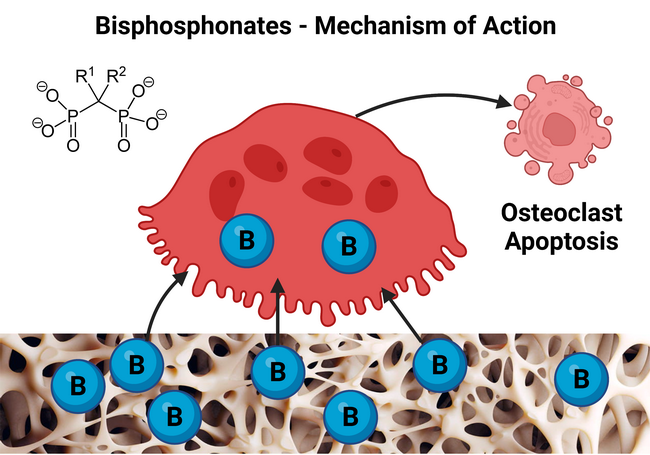Paget Disease of Bone - Treatment : Bisphosphonates


Comments:
Bisphosphonates (BP): BPs are pyrophosphate analogs and contain two phosphonate groups linked to a C atom. The two R groups determine the chemical properties of individual BPs. BPs have been used in the treatment of Paget disease of bone and other conditions that exhibit bone fragility such as osteoporosis, bone metastases, primary hyperparathyroidism, fibrous dyplasia and others. BPs have a very high affinity for bone and are preferentially incorporated into sites of active bone remodeling by binding to hydroxyapatite crystals. First generation BPs (non-Nitrogen containing) work by entering the osteoclasts and getting incorporated into newly synthesized ATP molecules due to their similarity to inorganic pyrophosphate. Progressive accumulation of these non-hydrolyzable ATP molecules disrupts ATP-dependent cellular processes and leads to osteoclast apoptosis. Newer generation BPs with nitrogen-containing side chains block the enzyme farnesyl pyrophosphate synthase in the HMG-CoA reductase pathway. The reduced availability of key metabolites disrupts osteoclast function and promotes osteoclast apoptosis. Patients should not be Vitamin D deficient, have good calcium intake and normal calcium levels prior to therapy to avoid hypocalcemia. Within months, BPs like both zoledronate and alendronate normalize alkaline phosphatase level, promote healing of lytic lesions, and restore normal lamellar bone. Illustration created with: BioRender.com



